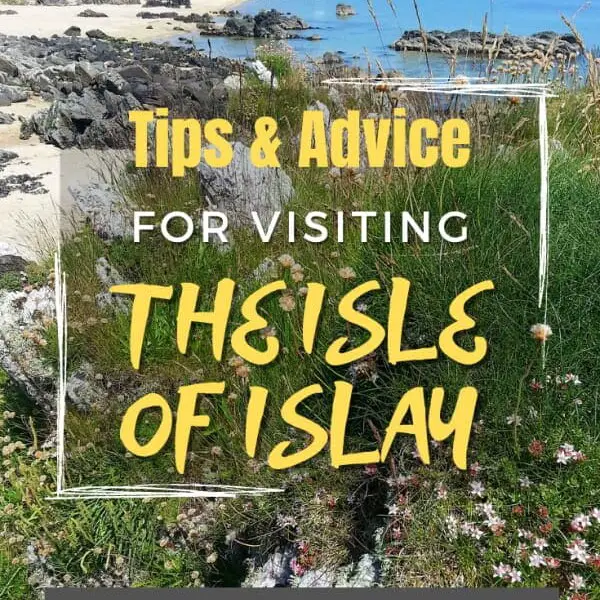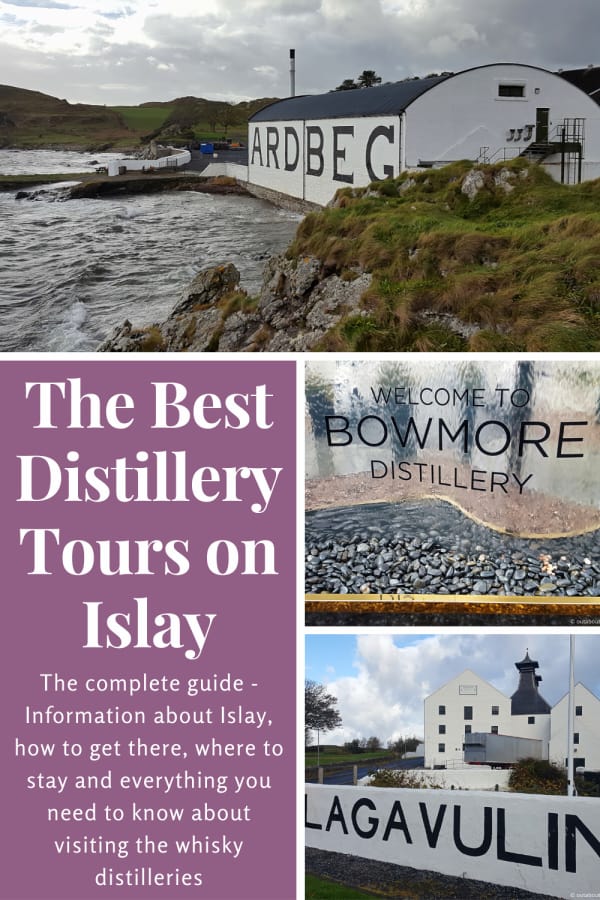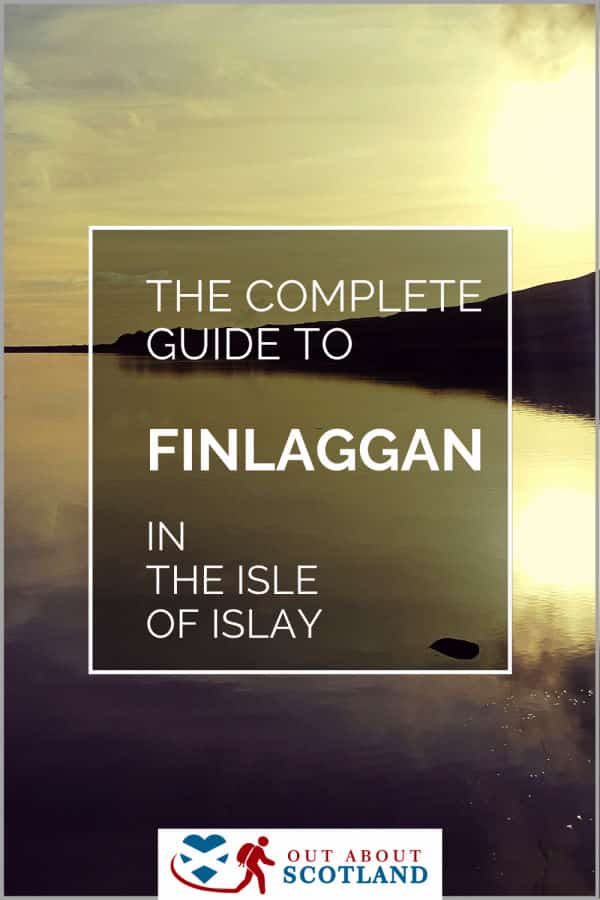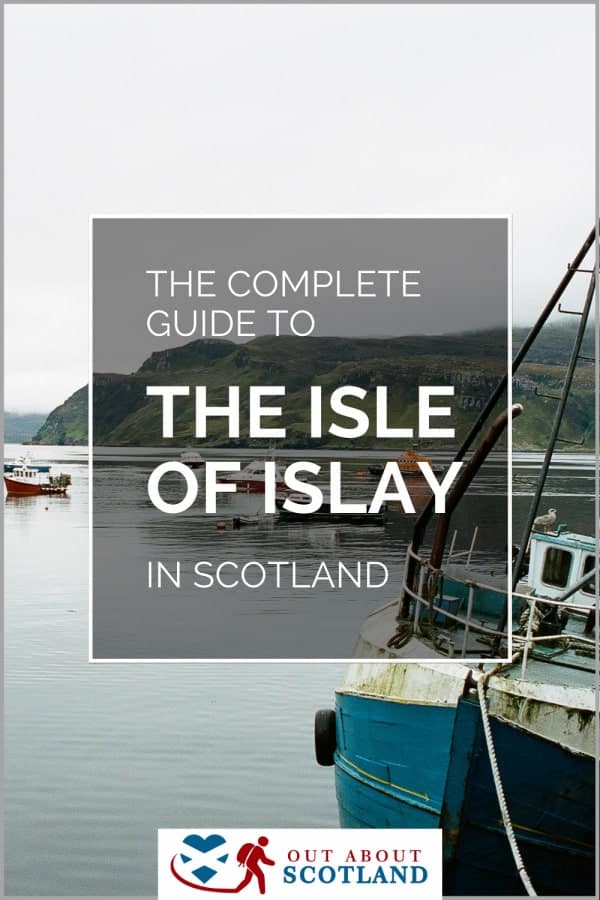The Isle of Islay on Scotland’s west coast is one of the country’s premier tourist destinations, and not just for its whisky distilleries. This is an island that guranatees visitors a great experience, whether wildlife watching, relaxing on a beach, hiking through picturesque countryside, or taking a boat tour around the coastline.
Discover tips and advice for visiting the Isle of Islay with this article that explains how to get there, how to travel around the island, the weather, and the best places to visit.
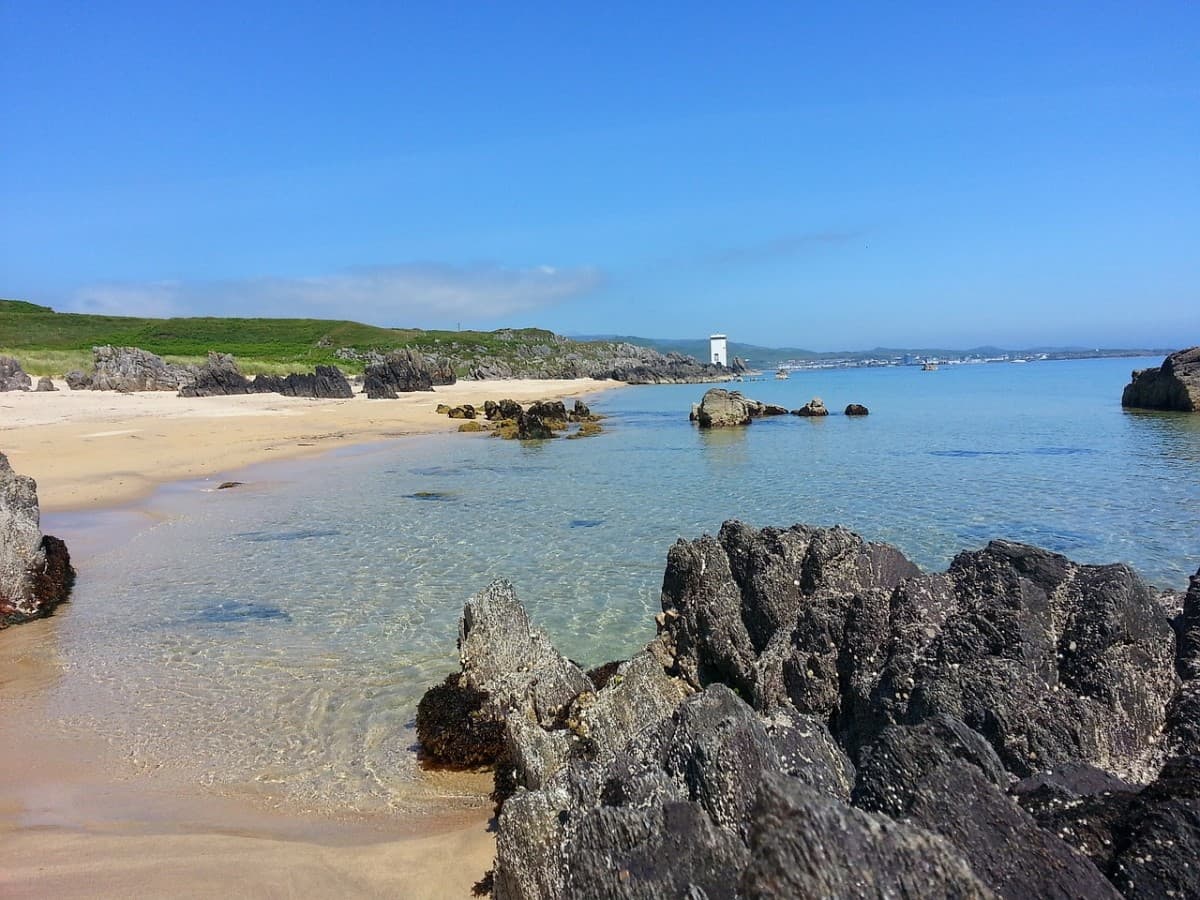
Advice for Visiting the Isle of Islay
I first visited Islay in 2015, and I’ve been a big fan ever since. I was astounded by how beautiful it is as soon as I stepped off the ferry, with its expansive, sweeping plains of Machair, gently rolling hills, and dramatic coastline. That coastline, by the way, is absolutely stunning thanks to bays and sea lochs that offer breathtaking views and some of the best wildlife-watching experiences in Scotland.
Of course, many people visit Islay for the whisky distilleries – there are nine of them – but the island is also a nature lover’s dream destination, and photographers will fall in love with places like Loch Gruinart (home to over 20,000 geese) and Loch Indaal (home to rare birds like corncrakes and choughs).
If you’re not interested in wildlife you’ll be pleased to know the island’s climate benefits from the warm Gulf Stream that ensures mild temperatures and lots of sunny days from April to August, which makes the golden sand beaches at Laggan Bay and Gruinart extremely inviting.
Tours of Islay
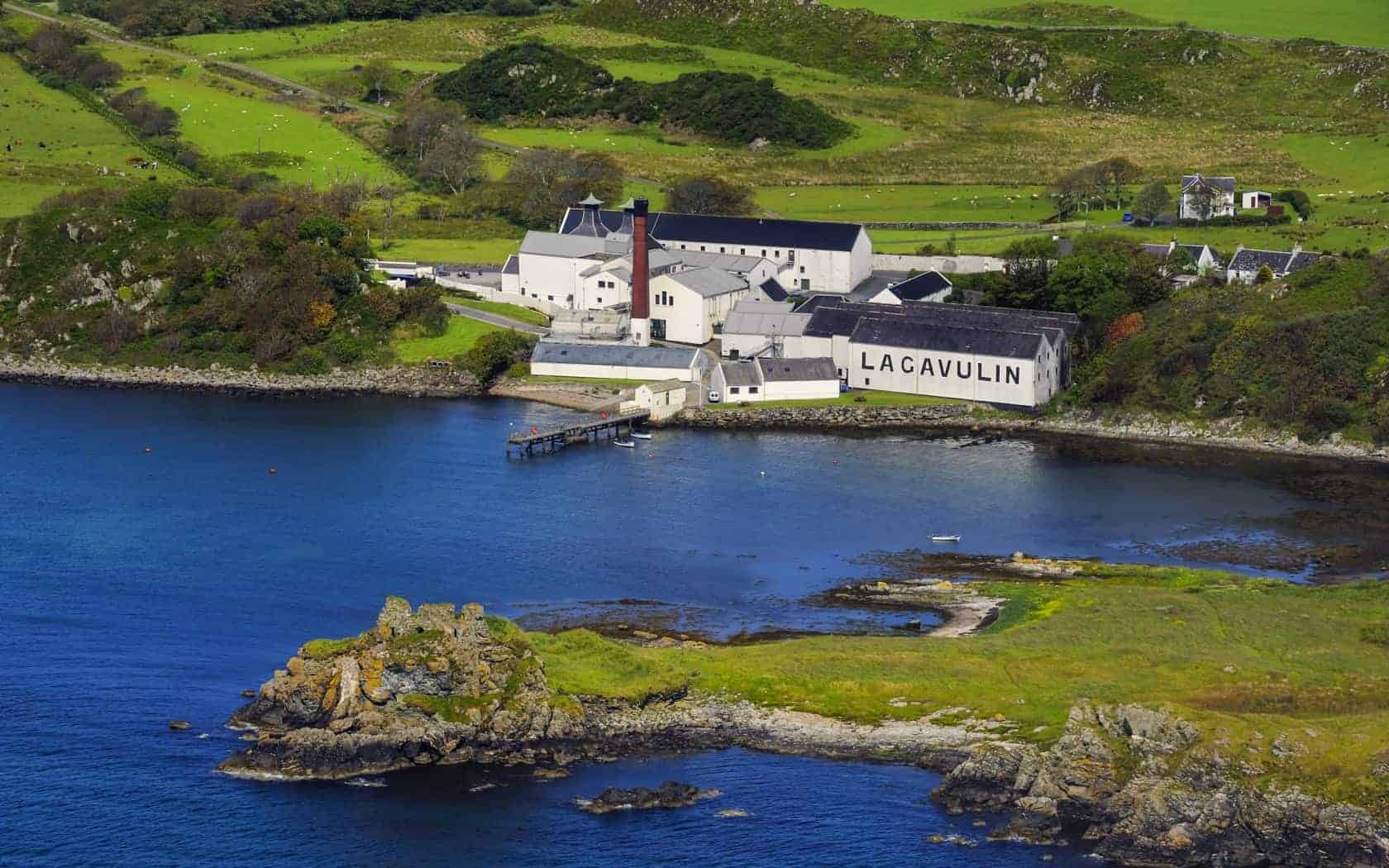
There are a lot of places to discover on Islay. There are beautiful coastlines to walk around, historic whisky distilleries to visit, and incredible wildlife-watching opportunities around every corner. While you might be tempted to just set off and see what you stumble across, it’s sometimes best to join a guided tour, especially if it’s your first visit.
Although there are dozens of tour operators willing to take visitors around Islay, the pick of the bunch has to be Rabbie’s. Their speciality is small-group tours for no more than 16 people, travelling in comfortable minibuses where you’ll never feel lost in a sea of strangers.
I’ve personally used Rabbie’s before, and every time has been an enjoyable experience. The drivers have an in-depth understanding of Scotland, the places they take you to are incredible, and the prices are reasonable. If you’re thinking of touring the Isle of Islay and would like to know more about Rabbie’s, I highly recommend taking a look at their website which shows all the tours they run in Scotland as well as the rest of Britain.
Rabbie’s Islay & The Whisky Coast 4-day Tour
Itinerary day 1:
- From Edinburgh head to the Highlands and stop at the Trossachs National Park for food.
- Continue through the West Highlands towards the coastal town of Oban.
- Take a tour around the Oban distillery and have a seafood lunch.
- Visit Kilmartin Glen to see the ancient standing stones.
- Take the evening ferry to Islay.
- Once on Islay head to Bowmore for overnight accommodation.
Itinerary day 2:
- Take a tour of the Bowmore distillery.
- Visit Ardnahoe distillery for a tour and lunch.
- Visit Kilchoman distillery for a tour and a whisky tasting.
- Return to Bowmore.
Itinerary day 3:
- Visit the Ardbeg distillery for a tour and lunch.
- Visit the Laphroaig distillery.
- Explore Kildaton church and Dunyvaig castle.
- Visit Lagavulin distillery for a tour and a tasting.
- Return to Bowmore.
Itinerary day 4:
- Take the ferry back to the mainland and drive south through the Highlands.
- Stop at the village of Inveraray on the banks of Loch Fyne.
- Continue to Loch Lomond and stop for photos.
- Return to Edinburgh.
Book an Islay 4-day tour with Rabbie’s
How to Get To Islay
Islay Ferry
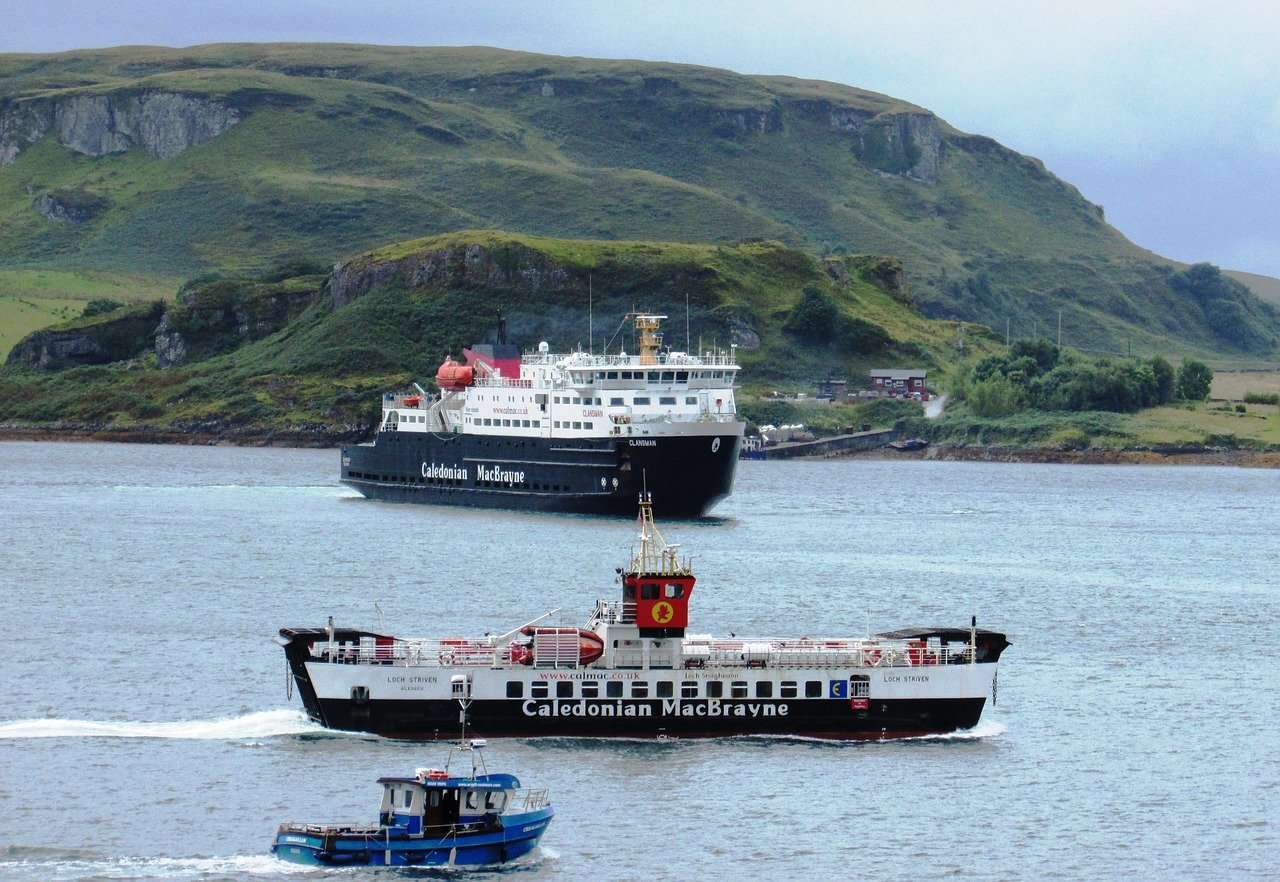
The Isle of Islay is located in Argyll, just southwest of Jura, and only 25 miles north of the Irish Coast. The island can be visited by air and by sea, but you might be best off catching the ferry when the winds picks up (i.e., all winter), as flights get frequently cancelled without much notice.
The majority of people travelling to Islay will arrive on one of the Calmac ferries that sail daily from Kennacraig on the Kintyre peninsula. While flying is faster, the crossing on the ferry is so nice that it has become something of a tourist attraction in its own right.
The Kennacraig ferry departs three times daily on a sailing that takes around 2 1/4 hours and it’s the most frequently used route for visitors coming from the south of Scotland. It is, however, a bit of a trek to get to Kennacraig so I’ll give you an overview of the route from Glasgow.
While you could travel via Gourock and the Cowal Peninsula (the most direct route) you will have to take two ferry crossings. The route via Loch Lomond and Inverary is longer (just over 100 miles from Glasgow) but faster, and you should be able to drive from Glasgow to Kennacraig in around 2 1/2 hours.
Route directions
From Glasgow, take the M8 across the Erskine Bridge then take the A82 through Dumbarton to Tarbert, via Loch Lomond. Take the A83 to Inveraray and then drive south on the A83 along Loch Fyne to Inveraray (a lovely lochside village; stop at Inveraray Castle before continuing).
Continue south on the A83 to Lochgilphead then follow the road along the picturesque Campbeltown peninsula to Tarbert before it cuts inland to Kennacraig.
If you’re visiting Islay from overseas or don’t have a car, I suggest checking the Travel Supermarket website to find the best hire car deals, as a car will open up the entire island to you. However, if you’re just popping over for a couple of days, you could always leave your vehicle at the Kennacraig ferry terminal car park and take a bike instead.
If you’d rather not drive, there are Citylink coaches that leave Glasgow four times a day from Buchanan Street bus station, which takes around 3 1/4 hours. Admittedly, that’s an hour longer than driving your own car, but it does at least mean you can have a few drinks on the way and you won’t have to worry about drink-driving after visiting Islay’s distilleries (we have a near-zero drink-drive policy in Scotland).
For the latest ferry information contact Caledonian MacBrayne:
- Website: Calmac Ferries
- Tel: 0800 066 5000
- Email: enquiries@calmac.co.uk
Flights to Islay
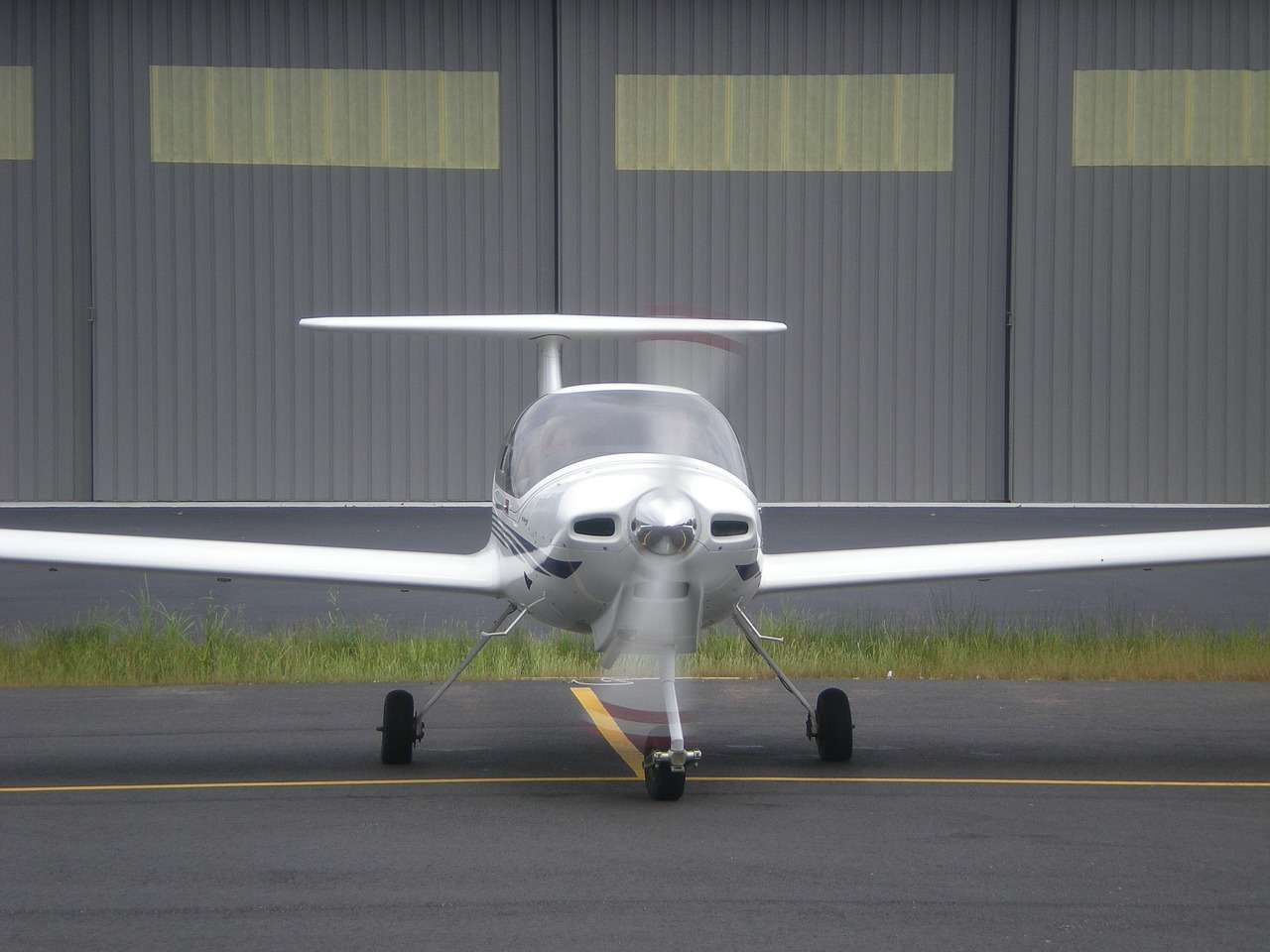
Getting to Islay by air is very easy thanks to the airline Loganair which operates two flights daily out of Glasgow International airport (GLA). Prices are reasonable (around £60 for a single ticket), and flight times are short with a non-stop service that takes just 45 minutes.
Getting to Glasgow International on public transport is effortless as there are regular buses from Glasgow city centre to the airport terminal, but if you’re driving the quickest route will be to take the M8 and look for junction 28.
There are signs for the airport as soon as you enter the Glasgow city limits, but if you have a satnav, you might like to enter the address ‘Paisley PA3 2ST’ which will re-direct you if there’s congestion (usually between 8 a.m. and 10 a.m. and 4 p.m. and 6 p.m).
If you’re driving to GLA expect to take (midday): Edinburgh 1 1/4 hours, Stirling 3/4 hour, Dundee 1 3/4 hours, Ayr 1 hour.
It’s a big airport, so I would give yourself extra time if you’ve never visited it before, or at least take a look at my Scotland’s Airports Guide which will give you further information about it.
The guide also details the arrival airport on Islay, which borders Laggan Bay on the west coast. Islay Airport (ILY) is very small, so don’t expect too many facilities when you get there, although there’s a wee shop inside and there’s parking for maybe 40 cars.
A bus stop directly outside the terminal building follows the A846 and the A847 from Portnahaven to Ardbeg, so you’ll be able to stop at most of the distillery villages, but I found the buses to be quite infrequent, so if you mistime your flight you might find yourself waiting up to 2 hours for the next bus.
How to Travel Around Islay
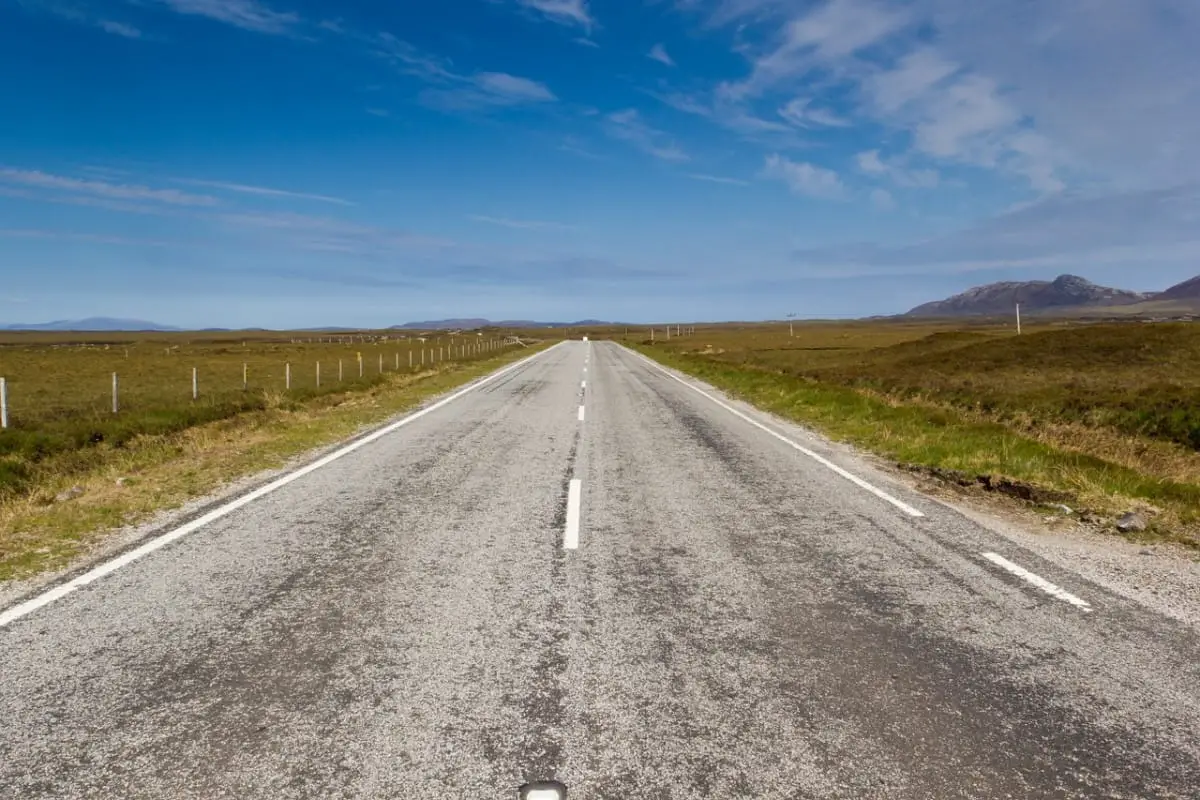
If you’re wondering what the best way is to travel around Islay, I have an easy answer for you: a car with a SatNav.
As far as driving is concerned, the roads are quite good, mostly single-track, but in great condition. To put it in perspective, if you’ve ever been to Mull, I’d say Islay has better roads, but they’re still not as good as the roads on Skye.
Unfortunately, there’s no ring road around Islay so you won’t be able to explore the entire coastline by car, but the A846 does at least enable you to drive from Lagavulin in the south to Port Askaig on the northeast corner, while the A847 will take you over to the western-most point at Portnahaven.
The rest of the roads are very narrow and only suitable for slow-moving traffic, so I wouldn’t recommend you drive to Islay in a big 4×4 or anything sporty with a firm suspension, and I have to say that on my last two visits, I was glad I hired small cars (Vauxhall Corsa and Ford Fiesta, which were perfect for the job).
I have to mention I found the locals to be incredibly courteous and they’re very tolerant of slow tourists driving on unfamiliar roads, and they’ll almost always wave to you as you drive past them. I admit it was a bit of a culture shock at first, but I found myself missing those friendly people on my return to Edinburgh.

Another option for getting around Islay is the bus service, which is respectable for an island service but obviously not up to the efficient standards of Glasgow or Edinburgh. The two main services are the 450 and the 451 which will take you between Portnahaven, Bowmore, Ardbeg, Bridgend, and Port Askaig, although, as I mentioned in the flight section, there can be an hour-long wait between them.
With that in mind, I personally wouldn’t recommend using buses as your only form of transport on a holiday to Islay, but they do at least offer a cheap way of travelling between some of the distilleries. The bus services run between 7.20 a.m. and 6.30 p.m. midweek and 8.10 a.m. and 6.30 p.m. at the weekend, but there is no service on Sunday so you could find yourself stuck in the middle of nowhere if you miss the last one on Saturday evening, which is where Islay’s taxi services will come to the rescue.
There are a few taxi operators on the island that can be pre-booked but there are two that I used that I will happily recommend. The first is Bowmore Taxi Service which runs an excellent whisky sightseeing tour, and the second is Islay Taxis, which picks up from the airport and offers sightseeing tours around the island. Bear in mind that these services are usually very busy in the summer months, so you’ll need to book well in advance.
If you want to get to the more inaccessible parts of Islay – the northeast and southeast corners – you’ll have no option but to get as close as you can either on public transport or by driving, and then walking.
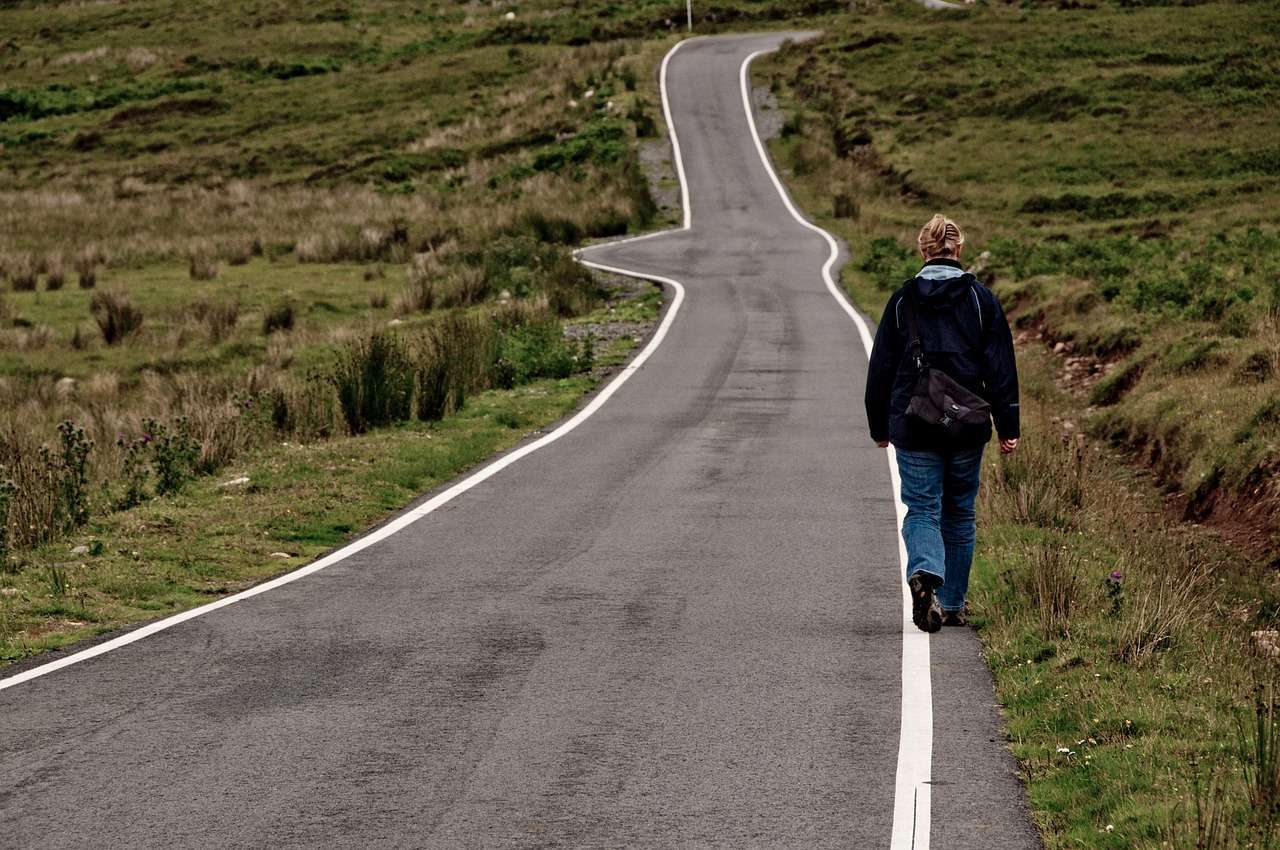
If you do, make sure you’re wearing a good pair of waterproof walking boots (Amazon link to mine) – even in summer – because most of the terrain contains Sphagnum moss which holds water like a sponge. That means it’s almost always damp and boggy underfoot, so no matter the time of year, you risk going ankle-deep in bog water as soon as you step off the road.
As nice as Islay is for walking you might like to hop on the ferry to the neighbouring Isle of Jura which can be reached from the terminal at Port Askaig. The trip is very short – around 10 minutes shore to shore – and costs less than £10 for a car and driver.
Jura is a similar size to Islay though it has far fewer facilities and only one village, which is Craighouse on the east coast. The roads are narrow and single-track, and the landscape is mostly rough grassland, but it’s an interesting day trip, especially if you pull your walking boots on and go for a hike around the Paps of Jura, the three mountains on the west side of the island, one of which has a summit of 2,575 feet.
One last thing: if you take an electric bike to Islay, you’ll have the best of all worlds. Cheap transport, no problems on narrow roads, and the chance to explore large parts of the island without much effort. Just a suggestion.
Accommodation on Islay
Islay Accommodation
Islay is a large island (for the Scottish west coast) but you might find it difficult to find a place to stay if you’re heading there in summer. There’s a youth hostel in Port Charlotte if that’s your thing, and there are a handful of hotels spread across the villages, but I always prefer to stay in AirBnBs as you get so much more for your money.
The Islay Info website highlights a selection of self-catering holiday homes across the island, most of which cater to large families, although there are a few smaller properties that would be ideal for couples and solo travellers.
Camping
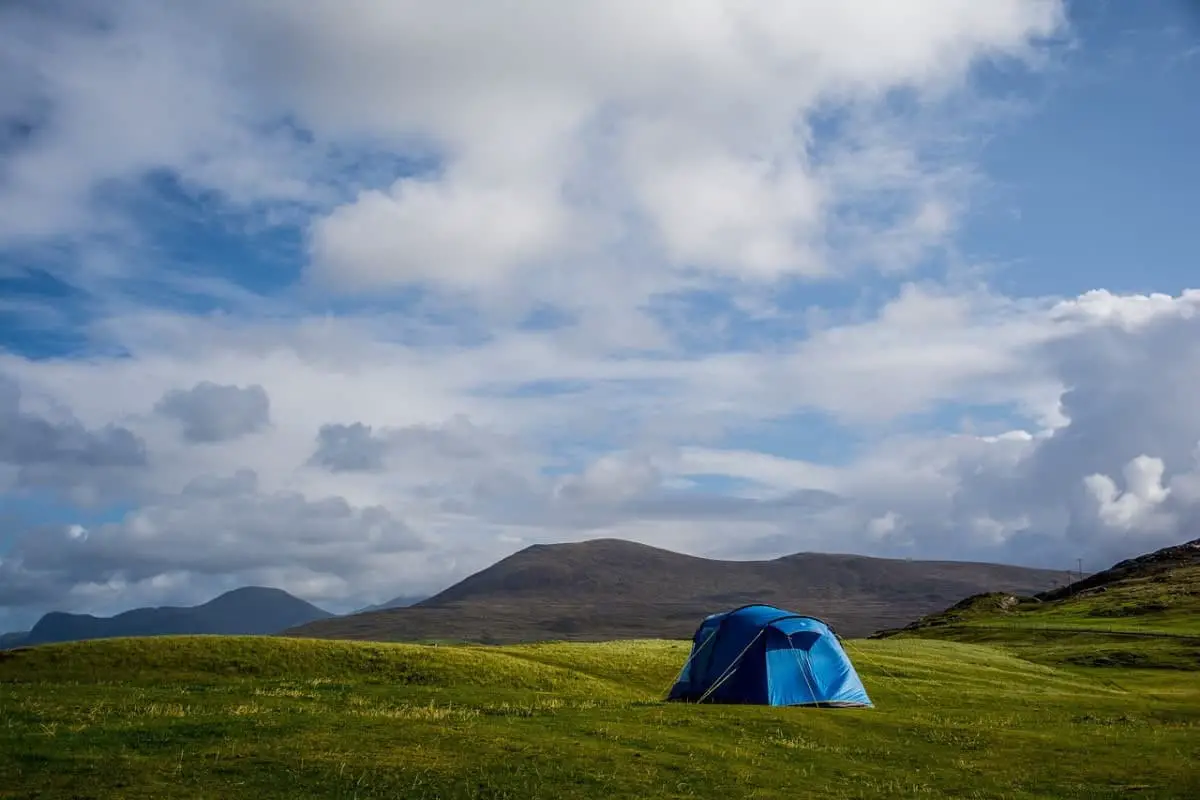
Islay is a superb place for camping, whether it’s in a tent or camper van, and there are several designated camping areas where you can pitch for as long as you like. The island is also very accommodating when it comes to wild camping, but there are a few restrictions, which I’ll cover later.
There are a few campsites on the island but the two main ones are Kintra Farm and Port Mor. Kintra Farm is the best location, in my opinion, as it’s near the airport so it’s easy to get to, and it’s situated on the gorgeous Laggan Bay, which is one of the nicest spots on the island.
The bay features a famously large beach known as The Big Strand which is an astonishing 7 miles long, and luckily enough for campers, Kintra Farm has the best access point. The campsite is quite basic and you don’t get many facilities other than water stands and a toilet block with showers, but on the other hand, you’re allowed to pitch your tent anywhere you like, and the views are stunning.
Port Mor campsite is located in the Port Mor community centre on the northern side of Loch Indaall, south of Port Charlotte. This campsite has facilities for tents and camper vans, and unlike Kintra Farm, there are electric hook-up points.
It’s not quite as scenic as Kintra Farm as the stretch of coastline is bare rock without a beach to walk along, but you do have pubs and restaurants nearby in Port Charlotte, and the Port Mor centre has a café, internet access, and laundry facilities.
If wild camping is your preferred option you won’t have any problems on Islay but there are a few considerations to bear in mind.
- You can only wild camp at the same location for a maximum of 3 nights.
- You are not allowed to wild camp in big groups. 2-3 people is fine though.
- You cannot wild camp on private property without obtaining permission first.
- You must not light open fires on Islay where there is dry peat due to the fire risk.
- You must not disturb any animals or damage any plants. Remember you are the visitor, not Islay’s wildlife.
You will also have to deal with the enemy of all Scottish wild campers – the infamous midge. Islay isn’t as bad as the mainland for midges due to the Atlantic winds keeping them at bay, but when the winds drop, they can be a real pain (literally).
It might be worth keeping your wild camping pitches close to the coastline where the sea breeze should deter all but the most determined midge, but for the ultimate protection, you really have to cover yourself in Smidge (Amazon link).
I’ve created a complete Guide to Avoiding Midges in Scotland that will give you lots of helpful advice for avoiding these wee beasties, as well as a guide to the best midge repellents and the best tents for summer camping in Scotland.
Islay Hotels

You’ll find bed-and-breakfasts dotted all over the island, but as I haven’t stayed in them, I can’t offer any preferred suggestions. However, if you search through them on Travel Supermarket you’ll find reviews from previous guests.
For hotels, take a look at this selection which varies in price and location but has good reviews:
- The Islay Hotel – Port Ellen. This hotel features live music events, an À la carte menu and a whisky bar.
- Port Charlotte Hotel – Port Charlotte. Small hotel with just 10 rooms but with an on-site restaurant, bar and whisky tours.
- Askaig Hotel – Port Askaig. This is the place to go if you want to catch the ferry to Jura so a stay in this hotel makes sense if that’s your intention.
- Bridgend Hotel – Bridgend. Close to Bowmore with a lounge, bar and restaurant. It’s slightly in the middle of nowhere, but then that’s a bonus in my opinion.
- The Machrie Hotel & Golf Links – Port Ellen. This is a luxury hotel that went through a major refurbishment in 2018. There are 27 rooms, suites and lodges and the facilities include a bar, restaurant and wellness centre. The highlight is the 18-hole Machrie Links golf course which overlooks Laggan Bay.
- Ballygrant Inn – Ballygrant. This is a traditional inn a few miles inland from Port Askaig which offers large bedrooms, a whisky bar, a restaurant and large gardens.
- Bowmore Hotel – Bowmore. If you’re looking for a base on Islay which has amenities within walking distance your best option is the village of Bowmore which has shops, a swimming pool and of course a distillery in the centre. The Bowmore Hotel has 12 bedrooms, a bar and a restaurant.
- Islay House Hotel – Bridgend. This is the grandest hotel on the island by a long way. It was built in 1677 at the head of Loch Indaal where it overlooks the beach in between thick woodland. The location of the hotel in the centre of Islay makes it the perfect place for a long visit.
- Lochindall Hotel – Port Charlotte. A traditional hotel with 16 rooms. This is a family-run business that has been owned by the same family for over 100 years.
- Lochside Hotel – Bowmore. Lochside Hotel has been recently refurbished and it now offers 12 en-suite rooms. The hotel is famed for its extensive whisky bar which has over 300 bottles in stock at any time, and the restaurant is highly regarded for its menu which features locally sourced produce.
The Best Time of Year to Visit Islay
I’ll keep this introduction short and say the best time of the year to visit Islay is from April to August, but if you’d like a little more information, keep reading.
Like most of the islands on Scotland’s west coast, Islay experiences strong winds from the Atlantic Ocean throughout the year. While the weather as a whole is quite mild (for Scotland), those winds are another matter altogether, and they can make or break your holiday on the island.
I’ve visited Islay in February and August so I know first-hand that the winter months are probably best avoided unless you absolutely have to travel at that time of year, even though there are plenty of distilleries to hide inside.
As an example, when I visited the American memorial at The Oa (detailed further down the page), the wind was so strong I could barely stand up. It was also pushing me towards the cliffs – look at the photo further down to see how high they are – which made the whole experience just a wee bit terrifying.
Spring (April/May) is a good time to visit Islay as there are frequent sunny days, the temperatures aren’t too bad, and the accommodation prices are lower than the peak summer season. Also, there are generally fewer tourists milling about, the distillery tours are quieter, and it’s unlikely you’ll see any midges.
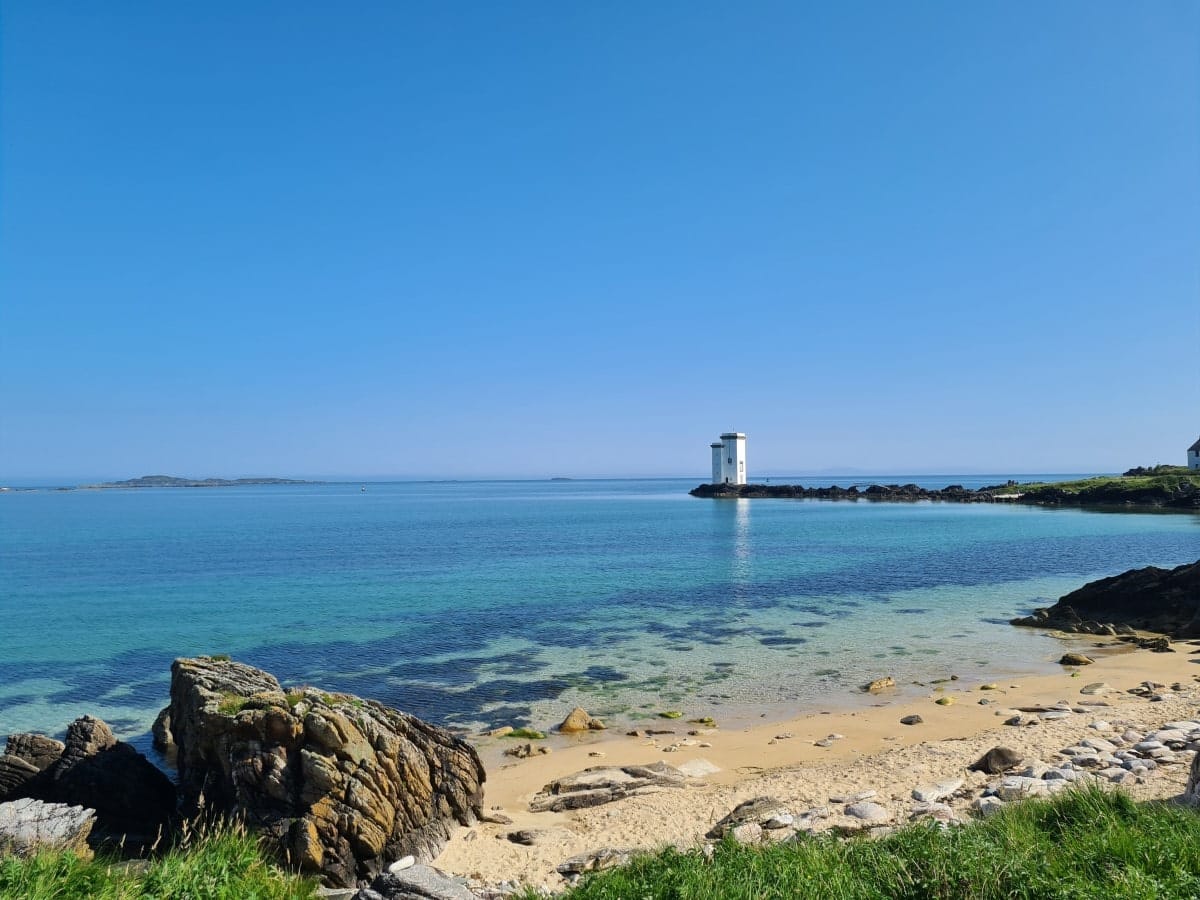
If the weather is the most important aspect of your holiday, then obviously summer (June, July, and August) is the best time to go, but be aware you’ll be sharing the island with the highest number of tourists, and the hotel prices will increase substantially compared to spring.
On the other hand, you’ll experience the least amount of annual rainfall and the daylight hours will be longer. Don’t be surprised to find yourself sitting outside enjoying the sun at 9 p.m.
Autumn, meanwhile, is often cloudy, dull, and grey, so I’d personally avoid that time of year unless it’s early September, which frequently sees the remains of summer weather with around 12 hours of daylight and temperatures hovering in the 15/16 °C region.
The table below has a month-by-month overview of the climate on Islay.
| Max Temp °C | Min Temp °C | Daylight (hours) | Avg. Rainfall (days) | Avg. Windspeed (kts) | |
| January | 8 | 3 | 7.5 | 20 | 18 |
| February | 7 | 3 | 9.5 | 16 | 17 |
| March | 8 | 3 | 11.5 | 18 | 16 |
| April | 10 | 5 | 14 | 12 | 13 |
| May | 13 | 7 | 16 | 11 | 12 |
| June | 14 | 9 | 17 | 11 | 12 |
| July | 16 | 11 | 16.5 | 13 | 11 |
| August | 16 | 11 | 15 | 14 | 11 |
| September | 15 | 10 | 12 | 16 | 13 |
| October | 12 | 8 | 10.5 | 19 | 16 |
| November | 10 | 5 | 8 | 20 | 16 |
| December | 8 | 4 | 7 | 20 | 17 |
Things to Do on Islay
Islay is best known for three things: whisky, wildlife, and the landscape. As much as I would like to include every place to visit in this article, it would become far too long, so instead, I’ll give you a few highlights to include in your Islay itinerary.
As far as whisky is concerned, I’ve created a Complete Guide to Whisky Distilleries on Islay, so bookmark it to read at your leisure if you’re visiting the island for a whisky tour.
The OA
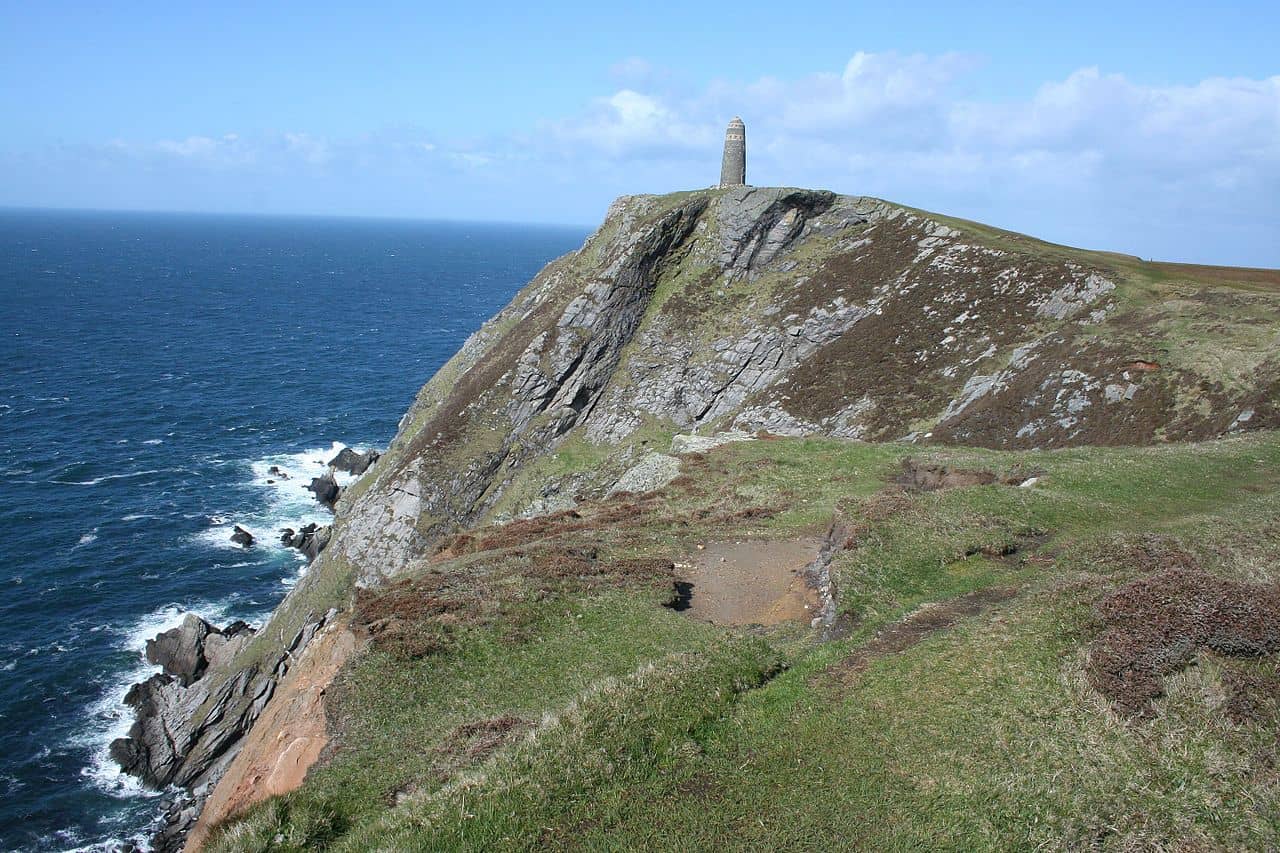
I mentioned this peninsula earlier but I’ll repeat myself here as it really is a stunning place. This is a wild expanse of open moorland, lochs, and coastline, with a few hills on the southern side that rise to around 200 metres. Most of the shoreline comprises sheer cliffs, although there are a few sandy beaches which are fantastic because they’re usually tourist-free.
You’ll find a very nice beach on the Port Ellen side at Kilnaughton and another called the Singing Sands just behind the Carraig Fhada lighthouse. The Singing Sands gets its name from the tiny silica grains on the beach that ‘sing’ when the wind blows through the minuscule tunnels the silica creates, similar to how a glass bottle whistles when you blow across the top.
Head to Lower Killeyan and you’ll discover another nice beach with a large cave that’s completely sheltered, or walk towards Loch Indaal to find the 7-mile-long Big Strand. Arguably the most scenic area of the Oa is the RSPB nature reserve near the American Monument on the southwest tip of the peninsula.
The monument was built to commemorate the loss of American lives when two troop ships sunk off the coast of Islay during WWI and it’s worth visiting for no other reason than the walk there is so nice, especially considering there’s so much wildlife in the area.
You’ll see lots of different bird species throughout the year, from chough’s to golden eagles, and there are huge flocks of seabirds like fulmars, razorbills, and kittiwakes that make their homes on the cliffs.
While you’re walking along the clifftops, keep your eyes open for otters which can often be seen hunting for food along the tide line, and you might also see seals, although their favourite spots on Islay are Loch Gruinart and the harbour at Portnahaven.
Finalggan
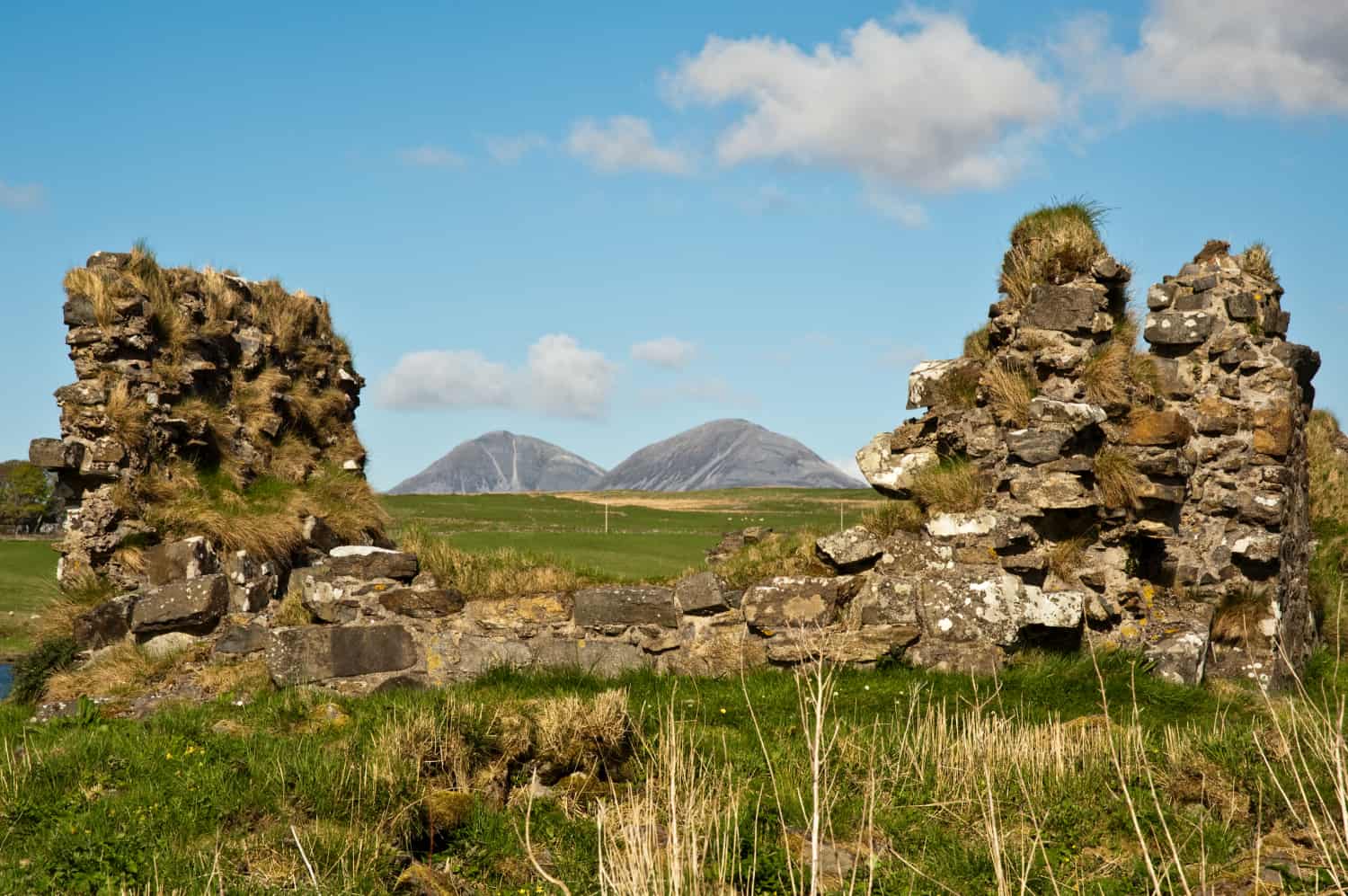
This is a site that’s famed more for its history than its scenery but it’s a great place to visit nonetheless. You’ll find Loch Finlaggan a few miles southwest of Port Askaig on the northeast part of the island in an area that’s mostly grassland and farmland but is no less attractive for it.
This is the ancient power base of the Lords of the Isles, the Nordic-born kings who ruled over Scotland’s western islands for hundreds of years and who almost conquered mainland Scotland during the time they were in power.
There are two islands on the loch where you can see ruins from those days though most of your time will be spent on the largest island – Eilean na Comhairle – which features several ruined buildings and medieval gravestones.
There’s a visitor centre in the car park that depicts the story of the Lords of the Isles as well as the significance of this part of the island. It’s all very interesting, and it certainly makes a nice change of pace from the island’s whisky tours.
Loch Gruinart
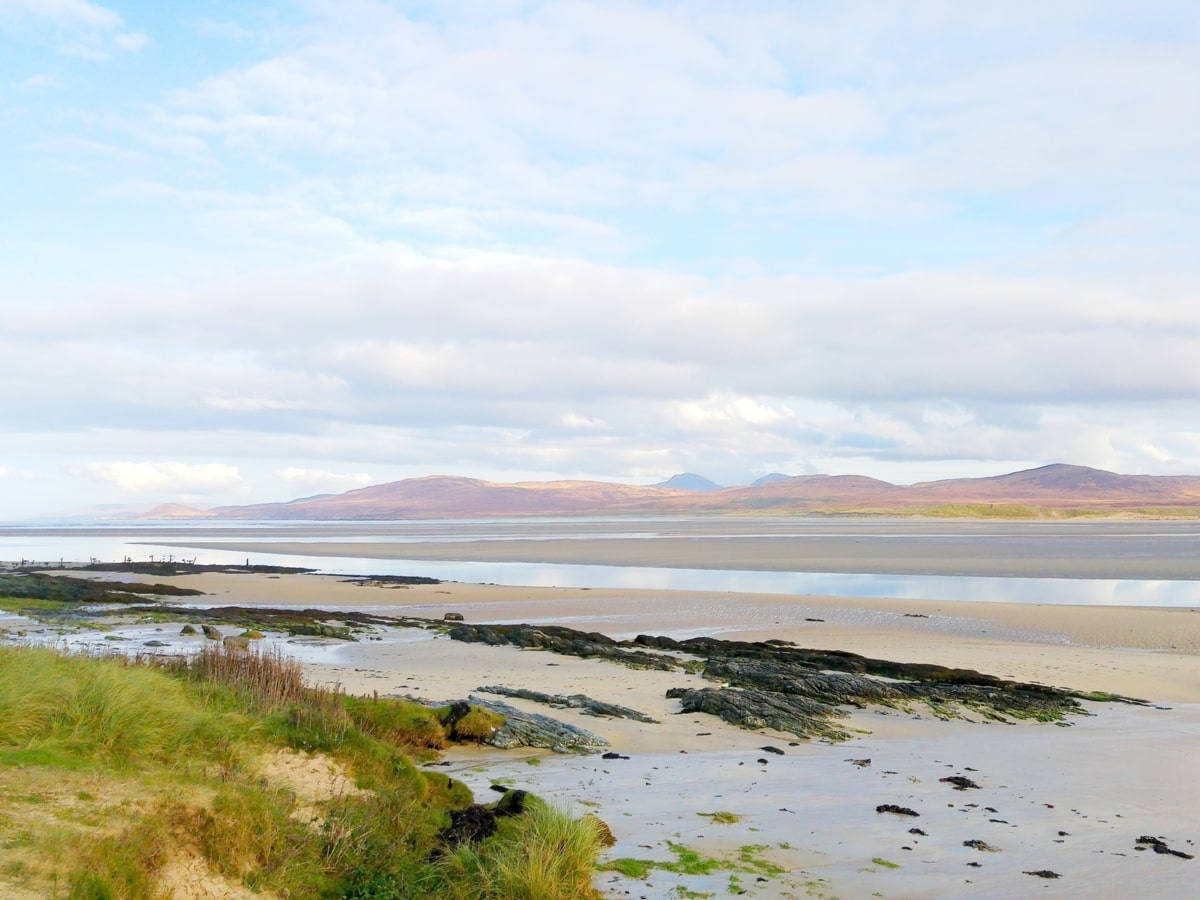
This is my favourite nature reserve on Islay and it’s a place that I highly recommend you visit. It’s a little tricky to get to if you’ve booked accommodation in the Port Ellen area as it’s located all the way up at the northern tip of the island, but it’s an absolutely beautiful place.
Loch Gruinart is a sea loch that extends inland several miles to border the RSPB Loch Gruinart Nature Reserve – a 1,600-hectare reserve that’s home to some of the largest flocks of birds in Scotland. Visit in October, and you’ll see the spectacle of barnacles and white-fronted geese fly in from Greenland to spend the winter on Islay. All 18,000 of them!
The flocks are so vast that the fields surrounding the loch turn black and white as the geese get their strength back after their long flight. Equally amazing is the sight of Loch Gruinart when the tide’s out, as it’s absolutely enormous and has to be the biggest expanse of sand I’ve ever seen in my life. Drive the winding road to Ardnave and walk across the dunes to see what I mean. It’s just stunning. There’s no other word for it.
Frequently Asked Questions
How long does it take to drive around Islay?
You cannot drive around the perimeter of Islay as there is no ring road, but it is possible to drive to most parts on the mainly single-track roads.
Port Ellen to Port Askaig: 19 miles, approx 30 minutes.
Port Ellen to Portnahaven: 26 miles, approx 40 minutes.
Bowmore to Port Askaig: 11 miles, approx 20 minutes.
Bowmore to Sanaigmore: 13 miles, approx 30 minutes.
How do you explore Islay?
You do not need a car on Islay as there is public transport with buses and taxi services. However, buses do not run to the remotest parts of the island and taxis are expensive, so taking your own car is preferable.
What is Islay famous for?
Islay is most famed for its peat-infused, smoky whisky which is exported across the world. There are 9 distilleries on Islay and most have tours and visitor centres. The island is also famous for its wildlife (particularly its birdlife) and its landscapes.
How long does the ferry to Islay take?
The Calmac ferry from Kennacraig on Kintyre sails to Port Askaig and Port Ellen on Islay. The sail to Port Askaig takes 2 hours 20 minutes. The sail to Port Ellen takes 2 hours.

